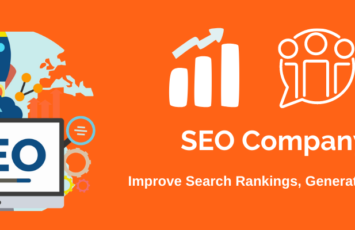Web Content Accessibility Guidelines to Boost your SEO
For those who own physical business space, you may be aware of the accessibility requirements and the necessity to be compliant with it to ensure a lawful administration and also to engage with all type of consumers effectively. In the USA, it is mandatory for public entities to follow the Americans with Disabilities Act (ADA) regulations to facilitate easy access to all with disabilities too. At the modern times of internet and e-commerce, these accessibility mandates apply to online activities and e-commerce too.
Why accessibility online?
At the core, accessibility is all about ensuring an environment which is friendly to all types of visitors and customers. While managing a website, accessibility means the content can be read, all visuals can be seen, and all can meaningfully understand all media. Do your website effectively meet these needs?
Taking it the other way around, there are about 53 million people in the US having disabilities; however, more than half of them are regular internet users. Also, there are a large number of adults over age 65, who also have difficulties in exploring and navigating the website features. Irrespective of whether the law mandates it or not, sooner or later, you have to prepare your website for accessibility to accommodate all these users.
Accessibility and SEO
It is a proven fact that improved SEO goes well aligned with website accessibility. By offering improved user experience, bounce rate will naturally reduce with a higher number of visitors, lesser negative feedback, and covering more audience. All these further contribute to better search engine ranking. Further, we will discuss a few essential web content accessibility guidelines to ensure SEO worthiness of your site through enhanced accessibility.
1. Ensuring responsiveness
Your website needs to be compatible with all types of screen sizes. The pages need to get automatically resized on all devices with the text easily readable and images perfectly viewable.
2. Methods of interaction
There may be many visitors to your website who cannot use mouse, keyboard or use their finger on mobile screens while accessing your website. So, ensure that you incorporate text-to-speech features to the web page for effective engagement.
3. Text size
For many visitors, especially old age, it will be the difficulty to read smaller fonts. However, putting oversized text may be sloppy, so you can add a resizing tool, which the users can select to view text in the desired size.
4. Alt text
Many visitors may have trouble seeing images on the website, as do the search engine crawlers. So, make sure that alt text caption for images is put rightly. So, they don’t have to see the image to understand what the visual context is. Also try to enter more descriptive details of images in the caption fields, which the visually impaired users can easily understand with text to speech.
5. Using transcripts
Ensure that all the videos, podcasts, and other streaming media content have proper transcripts for the users with disabilities can easily understand.
6. Organizing text
As a part of simplification, it is essential to use clearer and larger titles on top of the pages to ensure easy readability and navigation. Within the body, include appropriate header titles, paragraph titles, section breaks, and enough white space in between to highlight the text for enhanced readability.
Some other aspects too to take care in terms of accessibility and SEO are the text color, font, clear navigation with directional cues, option for internal search, directions to fill forms etc.





